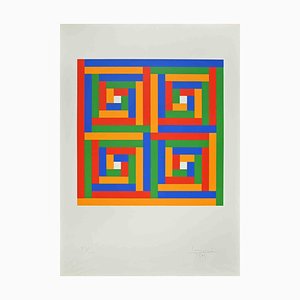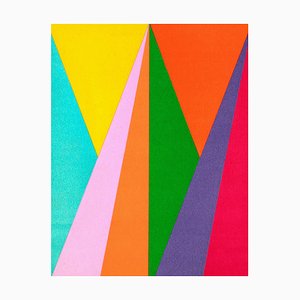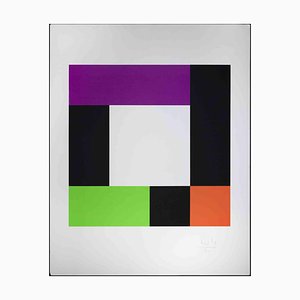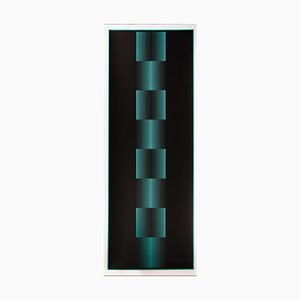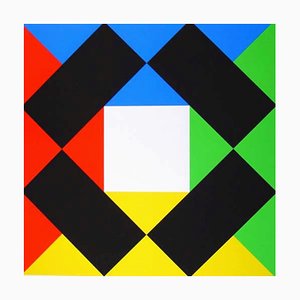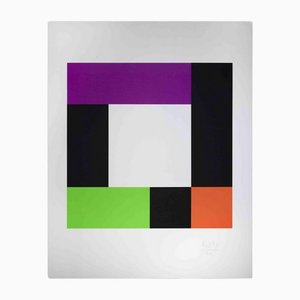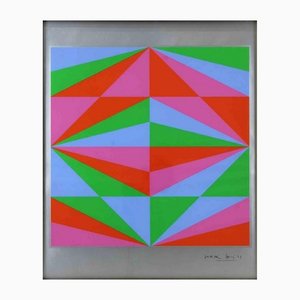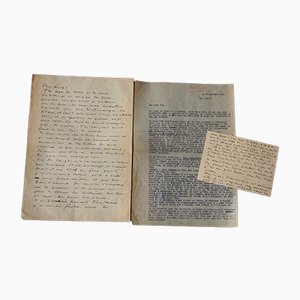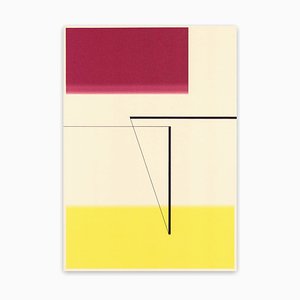
Swiss architect, graphic designer, painter, and industrial designer Max Bill (1908-1994) is known for being the most-successful student of the Bauhaus in Dessau and the co-founder the Ulm School of Design. His influential designs from the 1950s onwards reflect the abstraction-driven Concrete Art movement of the European postwar era.
Between 1924 and 1927, Bill apprenticed as a silversmith before attending the Bauhaus in Dessau from 1927 to 1929. During this time, he was instructed by many influential artists, including Josef Albers (1888-1976), Wassily Kandinsky (1866-1944), Paul Klee (1879-1940), and Oskar Schlemmer (1888-1943). Upon graduating, Bill relocated to Zurich, where he worked as an architect, painter, and graphic artist, among other things.
In 1932, Bill designed and built his own house and studio in Zurich. He became a member of the Abstraction-Création artist association in Paris, holding his first exhibition at the group’s gallery in 1933. There he met and befriended artists Hans Arp (1886-1966), Auguste Herbin (1882-1960), and Piet Mondrian (1872-1944). In 1936, he formulated the principles of Concrete Art from the ideas published in Manifesto of Concrete Art (1930) by Dutch artist Theo van Doesburg (1883-1931). From the late 1930s onwards, Bill was a member of Allianz, a Swiss artists group for Concrete Art.
With abstraction as its main expressiion, Concrete Art embodies cerebral thoughts in a tangible form, free from observed reality. Bill’s iconic designs created in this style include the Tripod Chair (1949); Sun Lamp (1951); the radically interchangeable Ulm Stool (1954, in collaboration with Hans Gugelot); the 32/0389 Wall Clock (1957); and a series of wristwatches (1961) for Junghans. He also created many posters and paintings, such as Endless Ribbon, Version IV (1961-2), Rotation Around Expanding White (1971-78); and Continuity, Colossus of Frankfurt (1986).
In 1953, along with Inge Scholl (1917-1998) and Otl Aicher (1922-1991), Bill founded the Ulm School of Design in Ulm, Germany. Originally based upon the Bauhaus tradition, the school developed a style all its own, integrating art and science—including semiotics—into its design curriculum. Bill was the head of the architecture and product design departments throughout the 1950s. Though the school closed in 1968, many famous design luminaries were associated with it, including Josef Albers, Johannes Itten (1988-1967), Tomas Maldonado (b.1922), Peter Seitz (b.1931), and Walter Zeischegg (1917-1983).
Bill lectured around the world and published many articles and books on art, architecture, and design. Notably, from 1967 to 1971, he served as a member of the Swiss Parliament. Bill’s work has been exhibited in museums and galleries around the world, including the Kunsthaus in Zurich, the Guggenheim in New York, the Museum of Contemporary Art in Florence, and the Bauhaus Archive in Berlin, among others.
Bill passed away at the age of 85 in Berlin. For more insight into Bill’s fascinating and prolific design career, check out the 2008 documentary film, Max Bill—The Master’s Vision.


